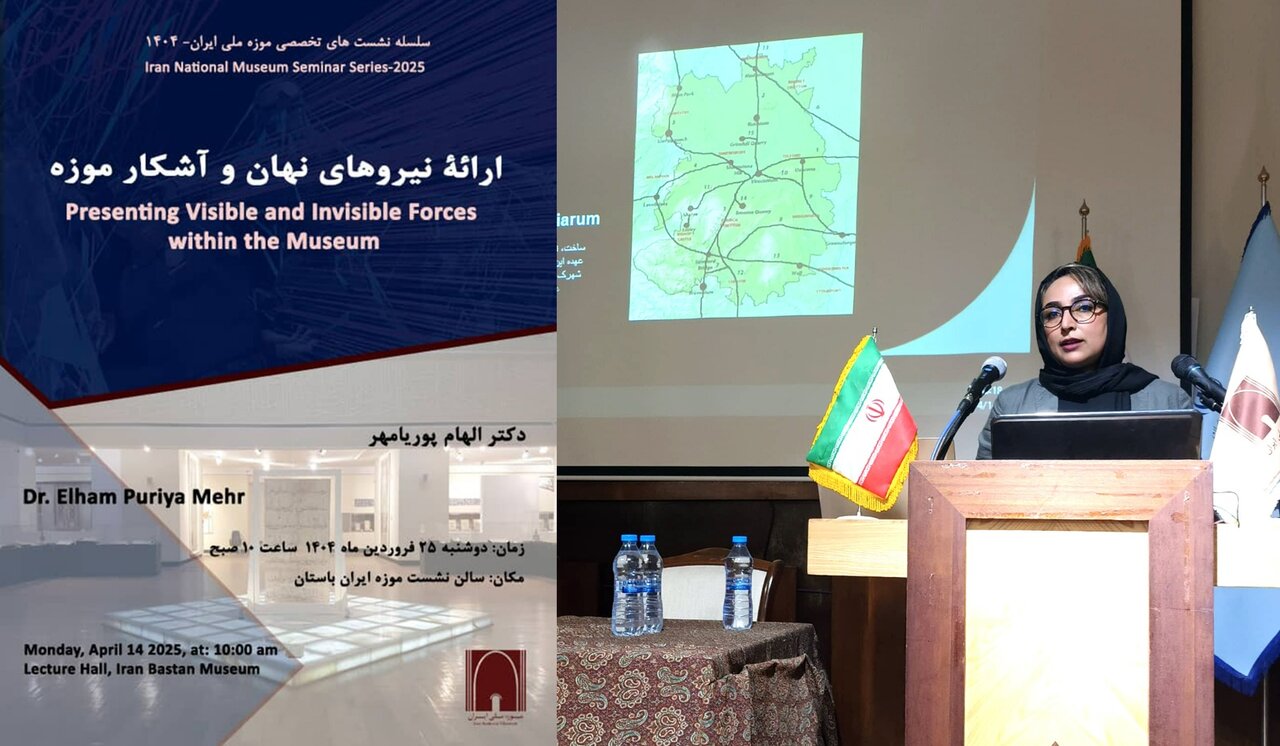National Museum session explores visible and invisible forces in exhibition spaces

TEHRAN – A specialized session titled “Presenting Visible and Invisible Forces within the Museums” was held on Monday at the National Museum of Iran, focusing on the evolving role of museums in contemporary society.
Dr. Elham Pouria Mehr, the keynote speaker, delivered a lecture examining how museums contribute to knowledge production, foster participatory environments for audiences, and reveal both visible and hidden forces that shape the museum experience.
In her address, Pouria Mehr offered a historical overview of the concepts of the curator and curatorial practice, tracing their evolution and structural shifts within the museum field. She emphasized the role of curators not only as custodians of culture and art but also as active agents in healing and interpreting cultural narratives.
The session, which was held at the Iran Bastan Museum within the prestigious museum in downtown Tehran, was part of ongoing efforts to engage professionals and academics in critical discussions on the transformative functions of museums in the modern era.
Drawing on contemporary museological theories, the speaker critiqued representation policies and exhibition methods in shaping museum-based knowledge, examining their impact on audience perception.
The visible and invisible forces within the museum and their role in shaping the future were another key focus of the lecture. Pouria Mehr analyzed the significance of events as dynamic tools in museums, seeking to elucidate the forces at work in museum objects, exhibition policies, spatial design, and the transmission of meaning to audiences.
In conclusion, by referencing successful examples of modern museums, the session emphasized the need to redefine the role of historical museums in envisioning the future. The event provided an opportunity to reconsider the cultural, educational, and social functions of museums.
At the end of the session, Dr. Jebrael Nokandeh, Director-general of the National Museum of Iran, commended Pouria Mehr’s lecture and stressed the importance of integrating new perspectives into museology.
Expressing hope for more specialized sessions on fundamental museum concepts and the role of museums in the contemporary world, Nokandeh remarked:
“Museums are not merely repositories of historical artifacts but dynamic institutions capable of playing a pivotal role in shaping future cultural and social discourses.”
The National Museum of Iran, established in 1937 in downtown Tehran, serves as the country’s principal museum and a vital institution for preserving and showcasing Iran’s archaeological and cultural heritage. The museum houses a diverse collection of artifacts that span from prehistory to the Islamic era, including invaluable pieces such as ancient pottery, textiles, and coins. As a center for research and education, the National Museum plays a crucial role in fostering an understanding of Iran’s rich history and its connections to other cultures, particularly through significant collections like the Chinese ceramics that highlight the interactions along the Silk Road.
AM
Leave a Comment